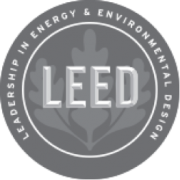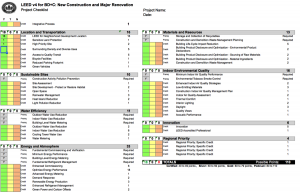What is an EPD?
 EPD stands for Environmental Product Declaration and quantifies the environmental impact of a product over its given lifecycle in the material stream. Much of the information on the EPD is based on a life-cycle assessment (LCA). An LCA assesses environmental impacts over the life of the material, building, or product, from raw material extraction, manufacture, through its use, to when it ends up in an incinerator or landfill. The EPD itself is essentially a data sheet that includes information on the specifics of a certain product as well as environmental information on the company that manufactures that product.
EPD stands for Environmental Product Declaration and quantifies the environmental impact of a product over its given lifecycle in the material stream. Much of the information on the EPD is based on a life-cycle assessment (LCA). An LCA assesses environmental impacts over the life of the material, building, or product, from raw material extraction, manufacture, through its use, to when it ends up in an incinerator or landfill. The EPD itself is essentially a data sheet that includes information on the specifics of a certain product as well as environmental information on the company that manufactures that product.
Relevant EPD information includes:
1. Life Cycle Impact (LCI) – How much energy, material inputs and environmental concerns does the item contain, what are the impacts?
2. Material Sourcing – Where and how was the material created, what processes were used to extract the raw materials?
3. Environmentally Preferable ingredients – Were recycled, rapidly renewable or environmentally certified materials use? Does the product contain harmful VOCs and other chemicals?
4. Manufacturing practices: land use, extraction locations, labor practices – How does the company that makes the product act? Does the product require clear cutting forests or dumping of waste into rivers? Is the material local?
So, EPDs create a place for transparency and allow for purchasers to choose between products not just based on the product itself, but on the many factors that go into creating that product. Through transparency, EPDs help to make a market that is fair to those who choose to produce products in a more ethically and environmentally friendly way. Although it may “cost” more for products to be produced more ethically, that is only a financial cost, and EPDs allow for the “true cost” of creating products to be seen, allowing project teams to choose a healthier and more ethically produced flooring material over one which is known to include harmful chemicals which may cause cancer or other negative impacts. The damage, or non damage, of ecosystems in the creation of products and other environmental factors now levels the playing field to be able to compare products across a variety of factors beyond just the product’s intended use.
EPDs are now required in LEEDv4 in order to earn points in the material credits. Some manufacturers already are providing this information, but many still have yet to do the Life Cycle Analysis of their manufacturing process in order to gather the information required for the EPDs. After October 31, 2016 as projects will be required to pursue LEEDv4, we hope to see more manufacturers providing this information as more project teams begin requesting it.
USG has already provided many EPDs.
See a sample: EPD SAMPLE
Environmental Product Declerations will continue to help propel the manufacturing industry to create more environmentally friendly and ethically produced products. As the interest in rating systems like WELL and the Living Building Challenge also request project teams to look at the specific chemicals that are part of the materials they use, manufacturer’s will need to find healthier alternatives to many of the harmful chemicals which are commonplace in manufacturing today.


